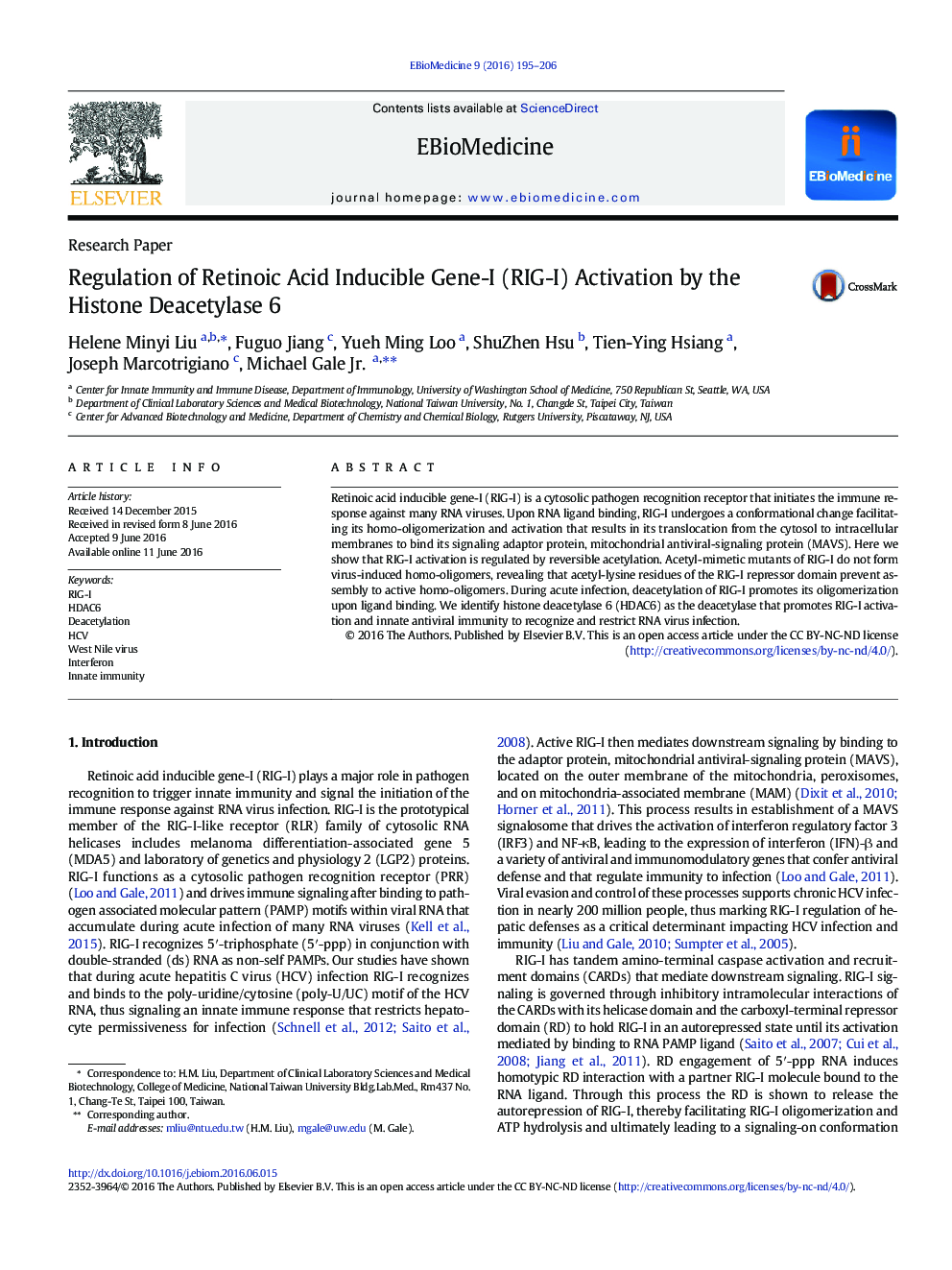| کد مقاله | کد نشریه | سال انتشار | مقاله انگلیسی | نسخه تمام متن |
|---|---|---|---|---|
| 2120717 | 1546890 | 2016 | 12 صفحه PDF | دانلود رایگان |

• RIG-I undergoes reversible deacetylation during acute virus infection.
• Acetylation of RIG-I Repressor domain controls RIG-I activation by restricting dimerization.
• HDAC6 is the cellular deacetylase essential for RIG-I deacetylation to induce antiviral innate immunity.RIG-I is a cytosolic pathogen recognition receptor at the frontline of immune response against RNA virus infection. RIG-I is expressed in most cells of the body and becomes activated after sensing and binding to pathogen associated molecular pattern (PAMP) RNA motifs within products of virus infection. The RIG-I activation process involves multiple regulatory events including PAMP binding and ATP hydrolysis, protein conformational change and intracellular redistribution, and specific post-translational modifications. Our results define reversible acetylation of RIG-I and its deacetylation by HDAC6 as key to controlling innate antiviral immune induction in response to RNA virus infection.
Retinoic acid inducible gene-I (RIG-I) is a cytosolic pathogen recognition receptor that initiates the immune response against many RNA viruses. Upon RNA ligand binding, RIG-I undergoes a conformational change facilitating its homo-oligomerization and activation that results in its translocation from the cytosol to intracellular membranes to bind its signaling adaptor protein, mitochondrial antiviral-signaling protein (MAVS). Here we show that RIG-I activation is regulated by reversible acetylation. Acetyl-mimetic mutants of RIG-I do not form virus-induced homo-oligomers, revealing that acetyl-lysine residues of the RIG-I repressor domain prevent assembly to active homo-oligomers. During acute infection, deacetylation of RIG-I promotes its oligomerization upon ligand binding. We identify histone deacetylase 6 (HDAC6) as the deacetylase that promotes RIG-I activation and innate antiviral immunity to recognize and restrict RNA virus infection.
Graphical AbstractFigure optionsDownload as PowerPoint slide
Journal: EBioMedicine - Volume 9, July 2016, Pages 195–206